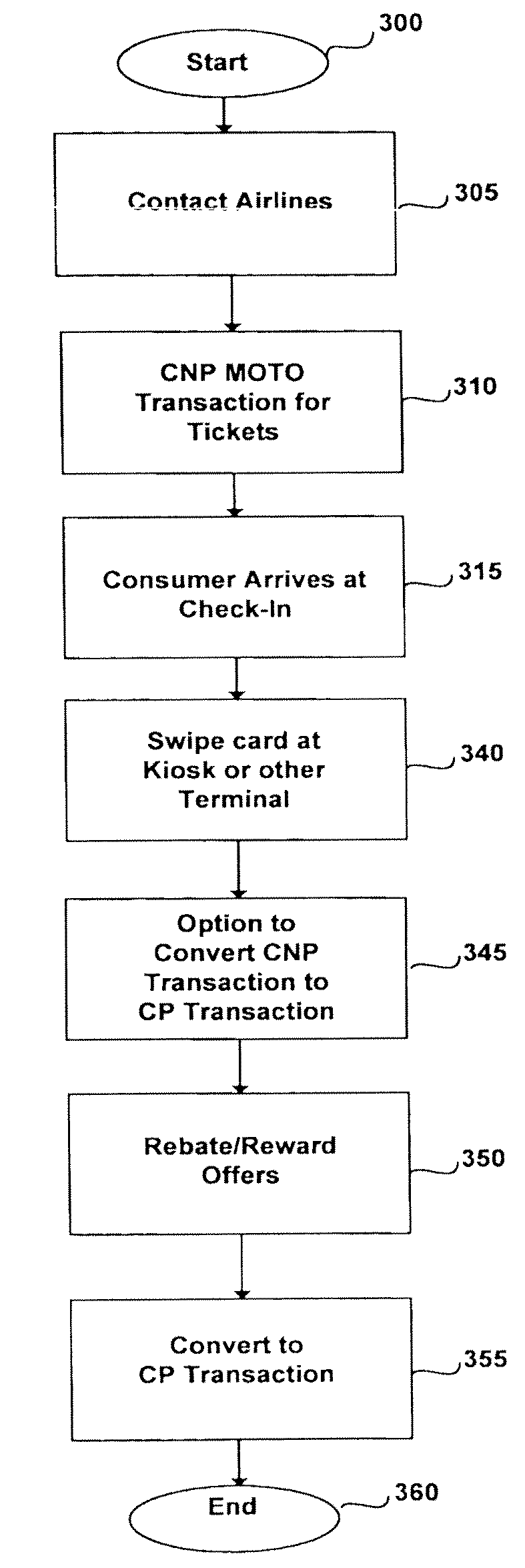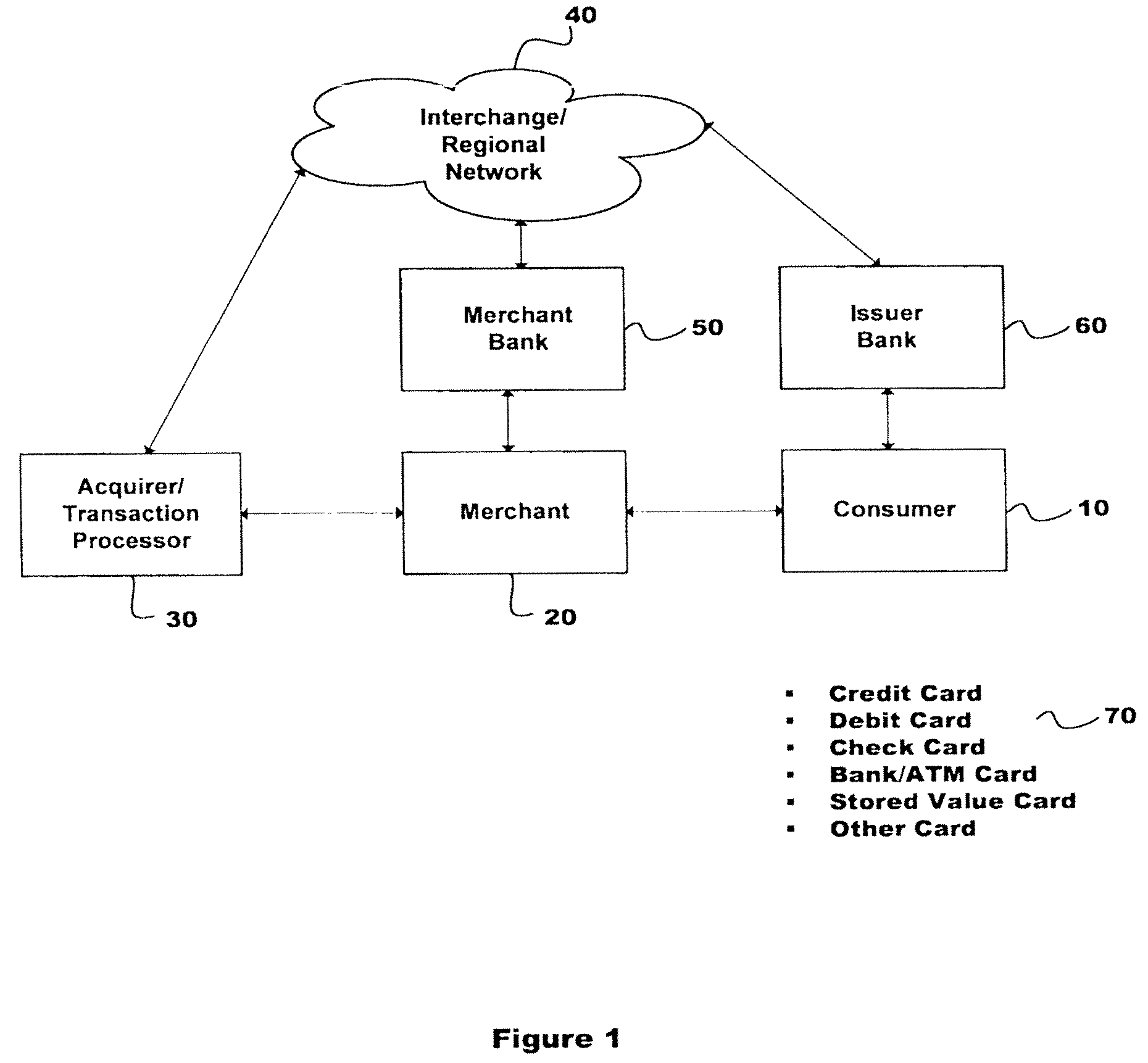System and method for conversion of initial transaction to final transaction
a conversion system and conversion method technology, applied in the field of payment processing, can solve the problems of merchants paying substantial sums of money in transaction fees, unable to meet the requirements of payment of transaction lees, and improving cnp-type transactions are still not as secure as regular cp transactions, so as to reduce the risk of repudiation, lower transaction lees, and less transaction fees
- Summary
- Abstract
- Description
- Claims
- Application Information
AI Technical Summary
Benefits of technology
Problems solved by technology
Method used
Image
Examples
Embodiment Construction
[0030]FIG. 1 is a block diagram of a card processing system for converting an initial card transaction to a final card transaction according to an embodiment of the invention. Consumer 10 is a consumer (intended to encompass commercial buyers) purchasing goods or services. Consumer 10 may be a person initiating such purchases over the phone (home phone, car phone, or cell phone), through the mail, or over a computing device (personal computer, laptop, Palm™ type device, personal data assistant |PDA|, Personal Communication Service [PCS] device, etc.). Thus, consumer 10 may be communicating with merchant 20 over a telephonic network, the mail system, or a computer network such as the Internet or other public or private computer network.
[0031]Consumer 10 may be communicating with merchant 20 by interfacing with a live agent, a virtual agent, a Web site or other computer network presence, a interactive voice response (IVR) unit, a voice response unit (VRU), or any other suitable mechan...
PUM
 Login to View More
Login to View More Abstract
Description
Claims
Application Information
 Login to View More
Login to View More - R&D
- Intellectual Property
- Life Sciences
- Materials
- Tech Scout
- Unparalleled Data Quality
- Higher Quality Content
- 60% Fewer Hallucinations
Browse by: Latest US Patents, China's latest patents, Technical Efficacy Thesaurus, Application Domain, Technology Topic, Popular Technical Reports.
© 2025 PatSnap. All rights reserved.Legal|Privacy policy|Modern Slavery Act Transparency Statement|Sitemap|About US| Contact US: help@patsnap.com



